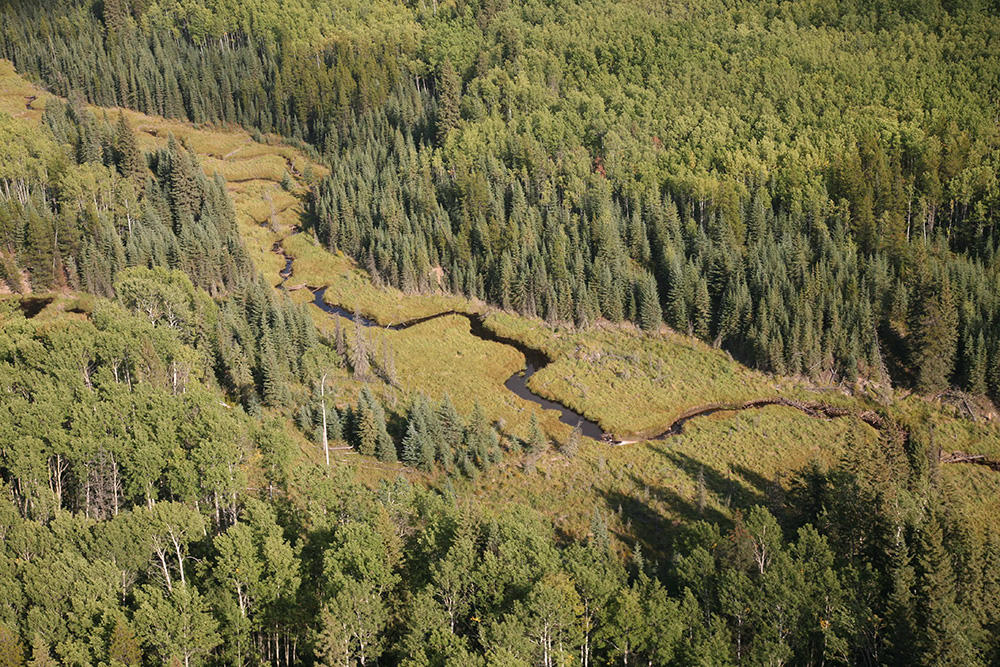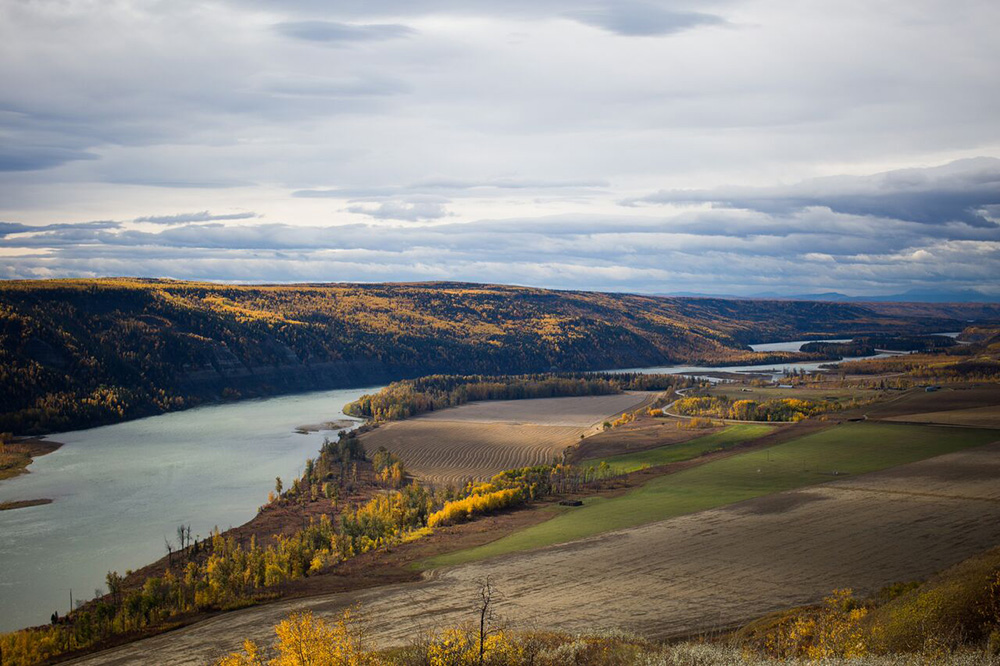- The Peace in Peril: The Real Cost of the Site C Dam
- Harbour Publishing (2016)
In the next decade, a 60-metre-high wall of compacted earth will stretch more than a kilometre across the main stem of the Peace River, causing the waters behind it to swell into a 93-square-kilometre artificial lake, drowning the best topsoil left in northeast British Columbia. The waters will swallow 50 islands and a valley that is home to farmers, ranchers, trappers and habitat to innumerable creatures big and small.
Over four days in late September 2015, writer Christopher Pollon paddled the 83-kilometre section of the river that will be destroyed by the Site C dam reservoir, accompanied by photojournalist Ben Nelms. Their goal was to witness the very first steps of construction for the $9-billion project, the most expensive infrastructure project in B.C. history. They conclude their trip by touring the same stretch by land, interviewing and photographing the locals who stand to lose everything.
The result of their journey is The Peace in Peril: The Real Cost of the Site C Dam — a book that is equal parts travelogue, history and journalistic exploration. You can read a Tyee interview with Pollon about the book here.
Here’s an excerpt from their Peace odyssey.
Confronting the Peace industrial sacrifice zone
It’s our last night in the Peace country, and we’re spending it in Fort St. John, an oil and gas town under the grip of the worst resource slump in decades. What to do on a Saturday night in a fading boomtown?
We decide to get a first-hand look at the gas fields that sprawl for hundreds of kilometres north of town — the alleged wellspring of B.C.’s future prosperity. We randomly choose a point on the map — a settlement called “Montney” about 25 kilometres north of Fort St. John — named for the vast geological shale gas formation that underlies much of this area. We arrive to little more than an intersection with a boarded up storefront and a few dilapidated houses. We continue north.
It’s a shock to drive into British Columbia’s oil and gas country and find nothing but bucolic farmer’s fields as far as the eye can see. But as we continue north, rural roads give way to fresh logging roads, and before we know it, we are in the midst of the Squirrel gas field, on a site run by a Calgary company called Pengrowth. The well we encounter is an unimpressive structure: a short metal staircase leading up to a drilling platform in the centre of a six-hectare clearcut. It’s unclear whether it is active or abandoned, and the distinction is important. There were at least 10,000 inactive well sites in northeastern British Columbia in 2014, and the situation is much worse in Alberta. In a report submitted to the BC Oil and Gas Commission by the David Suzuki Foundation in late 2015, the current taxpayer cleanup liability from this northeast B.C. legacy alone could be as much as $700 million.
Orphan wells are just part of the wider cost the entire Peace region must pay to be the economic engine of the province. Call it the resource curse: between 1974 and 2010, almost 70 per cent of the Peace River region’s five biggest watersheds, encompassing an area bigger than Croatia, had been altered by land use and ecological fragmentation. Consider that since the first commercial production of natural gas in 1948, 1,100 kilometres of transmission lines have been built, and 45,000 kilometres of roads now criss-cross the region, the latter equal in total distance to seven one-way road trips between Vancouver and Halifax. If we consider the sum of the impacts from all the gas wells, pipelines, clearcuts, coal mines and hydro development, the Peace is not so much an economic engine as an expendable, industrial sacrifice zone.
In March of 2015, the Blueberry River First Nations, whose reserve is just north of Fort St. John, decided enough was enough. They filed a lawsuit in BC Supreme Court, the first lawsuit to zero in on B.C.’s breach of Treaty 8 on the basis of the “sum of destructive industrial impacts of regional development.” (The lawsuit is ongoing.) About four years earlier, the Doig River First Nation, whose traditional territory has been degraded mostly by natural gas extraction, took action of a different kind. The nation unilaterally declared the boundaries of K’ih tsaa?dze — a 90,000 hectare “tribal park” straddling the B.C. and Alberta border about 75 kilometres northeast of Fort St. John.

Such unilateral action has precedents. Logging prompted the Haida Nation to create the Duu Guusd Tribal Park in 1981 on Haida Gwaii, which went on to receive B.C. government recognition as a protected area. In 1984 the Tla-o-qui-aht First Nation established a tribal park near Tofino to protect Meares Island from logging, which remains in force today. More recently, the Tsilhqot’in, coming off a legal victory that confirmed the First Nation’s title to a large chunk of its traditional territory, established the 3,000-square-kilometre Dasiqox Tribal Park in fall of 2014; the park included Fish Lake, which up until recently was designated to become tailings dump for an open pit mine.
What is particularly important about Doig River’s desperate action in the Peace is that the nation is a signatory to Treaty 8, and what they have created at K’ih tsaa?dze attempts to implement a way of managing land that closely mirrors the intent of their ancestors at the moment they signed the treaty.
It’s dark as we drive in silence back to Fort St. John and our hotel, which is connected to a casino. Given the province’s high-stakes gambling around Site C and liquefied natural gas, the latter feels like a fitting venue for our last few hours in town. I lose at slots as photographer Ben Nelms hits the card tables, drinking doubles and getting giddy as his winnings mount.
This place is surprisingly dead for a Saturday night. Ben plays on, while a bartender entertains me with tales of Fort St. John woe. Any given month, he says, half a dozen high-end pickup trucks are abandoned in the hotel’s Walmart-sized parking lot by young men who never return. The keys often hang in the ignition. He speculates that drugs, debt or both are to blame. “They just up and leave,” he says.
We get up early the next morning and decide it’s time for us to do the same.
Read a Tyee interview with The Peace in Peril author Christopher Pollon today on The Tyee here. ![]()
Read more: Aboriginal Affairs, BC Politics, Environment
















Tyee Commenting Guidelines
Comments that violate guidelines risk being deleted, and violations may result in a temporary or permanent user ban. Maintain the spirit of good conversation to stay in the discussion.
*Please note The Tyee is not a forum for spreading misinformation about COVID-19, denying its existence or minimizing its risk to public health.
Do:
Do not: